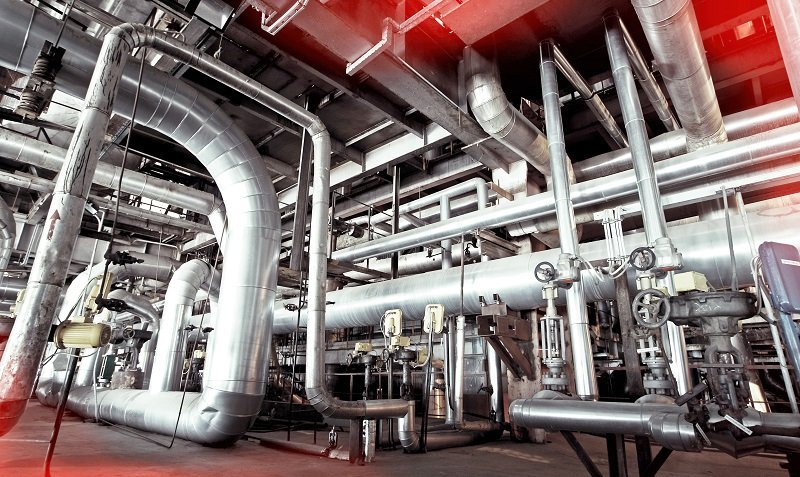In the realm of industrial operations and commercial facilities, optimizing safety and efficiency is paramount. One key component that significantly impacts these aspects is the ducting system. Modular ducting, in particular, offers an adaptable and efficient solution for managing air and dust flow, ensuring optimal performance across various applications. In this blog, we will explore how modular ducting systems can maximize safety and efficiency in your business.
Understanding Modular Ducting
Modular ducting refers to a flexible, pre-fabricated duct system designed for ease of assembly and modification. Unlike traditional ducting systems that are custom-built on-site, modular ducting comes in standardized, interlocking sections. These systems are commonly used in industrial settings, such as manufacturing plants, workshops, and data centers, where effective air management is crucial.
Key Benefits of Modular Ducting:
- Flexibility: Easily reconfigured to adapt to changing needs or layouts.
- Ease of Installation: Pre-fabricated sections streamline installation and reduce downtime.
- Scalability: Easily expanded or modified to accommodate growth or changes in operations.
- Cost-Effectiveness: Reduces labor and material costs due to its modular nature.
Enhancing Safety with Modular Ducting
Safety is a critical concern in any business, and modular ducting can play a vital role in maintaining a safe working environment. Here’s how:
1. Improved Air Quality
Modular ducting systems are designed to effectively handle and control airflow, which is essential in maintaining good air quality. Proper ventilation helps in:
- Reducing Airborne Contaminants: Effective dust and fume extraction minimizes the risk of respiratory issues for workers.
- Maintaining Temperature Control: Regulating temperature through effective air management prevents overheating of equipment and work areas.
Implementing Effective Filtration: Modular ducting systems can be paired with advanced filtration units to capture particulates and pollutants. This helps in ensuring cleaner air and protecting the health of your employees.
2. Fire Safety
In industries where flammable materials are used or produced, fire safety is a paramount concern. Modular ducting systems contribute to fire safety in the following ways:
- Reduced Risk of Fire Hazards: Modular ducting helps in managing dust and debris that could otherwise accumulate and pose a fire risk.
- Fire-Resistant Materials: Many modular ducting systems are made from fire-resistant materials that can withstand high temperatures and reduce the risk of fire spread.
Regular Maintenance: Ensuring that the ducting system is regularly cleaned and maintained helps in preventing the build-up of flammable dust and reduces the risk of fire hazards.
3. Compliance with Safety Standards
Modular ducting systems are often designed to comply with various safety standards and regulations. This includes:
- Occupational Health and Safety Administration (OSHA) Standards: Ensuring that the ducting system meets OSHA requirements helps in maintaining a safe working environment.
- Local Building Codes: Modular ducting systems are designed to meet local building codes, ensuring that they adhere to safety regulations.
Documentation and Certification: Keeping up with documentation and certification of your modular ducting system can help in demonstrating compliance during safety audits.
Enhancing Efficiency with Modular Ducting
Efficiency is crucial for the smooth operation of any business. Modular ducting systems contribute to efficiency in several ways:
1. Optimized Airflow
Effective airflow management is essential for operational efficiency. Modular ducting systems offer:
- Reduced Air Resistance: Smooth, well-designed ducting sections reduce air resistance and improve the efficiency of air handling systems.
- Customized Airflow Solutions: Modular components can be configured to create optimal airflow paths, reducing energy consumption and improving system performance.
Energy Savings: Efficient airflow management helps in reducing the load on HVAC systems, leading to lower energy consumption and cost savings.
2. Ease of Maintenance
Maintenance is an integral part of ensuring ongoing efficiency. Modular ducting systems facilitate easy maintenance through:
- Accessible Components: Modular sections can be easily accessed and removed for cleaning or inspection, minimizing downtime.
- Quick Repairs and Replacements: Damaged or worn-out sections can be swiftly replaced without the need for extensive overhauls.
Scheduled Maintenance: Implementing a regular maintenance schedule helps in keeping the ducting system in optimal condition and ensures consistent efficiency.
3. Adaptability and Scalability
As businesses grow or change, the ducting system must adapt to new requirements. Modular ducting systems offer:
- Flexible Reconfiguration: Easily reconfigured to accommodate changes in layout or operations, ensuring continued efficiency.
- Scalable Solutions: Easily expanded or modified to support increased airflow needs or additional equipment.
Future-Proofing Your System: Investing in a modular ducting system allows you to future-proof your infrastructure, reducing the need for costly upgrades or replacements.
Best Practices for Maximizing Safety and Efficiency
To fully leverage the benefits of modular ducting, consider implementing the following best practices:
1. Regular Inspections and Cleaning
Routine inspections and cleaning of the ducting system are crucial for maintaining safety and efficiency. This includes:
- Checking for Leaks and Blockages: Regularly inspect for any leaks or blockages that could impact performance.
- Cleaning Ducts and Filters: Ensure that ducts and filters are cleaned to prevent dust build-up and maintain air quality.
2. Investing in Quality Components
Choose high-quality modular ducting components that are designed for durability and performance. This includes:
- Selecting the Right Materials: Opt for materials that are resistant to wear, corrosion, and fire.
- Using Reliable Brands: Invest in components from reputable manufacturers to ensure reliability and compliance with safety standards.
3. Training and Education
Ensure that your team is well-trained in the operation and maintenance of the ducting system. This includes:
- Proper Installation Techniques: Train personnel in the correct installation procedures to avoid common issues.
- Maintenance Procedures: Educate staff on proper maintenance techniques to ensure long-term efficiency and safety.
Conclusion
Modular ducting systems offer a versatile and effective solution for managing airflow, enhancing safety, and optimizing efficiency in your business. By implementing a modular ducting system, you can achieve better air quality, improved fire safety, and compliance with regulations while enjoying the benefits of easy maintenance, adaptability, and scalability. Embrace these practices, and your business will benefit from a well-designed ducting system that supports both operational excellence and a safe working environment.



